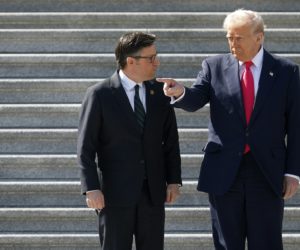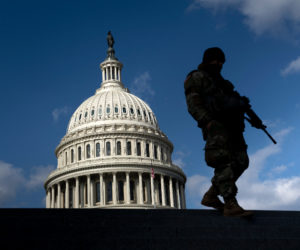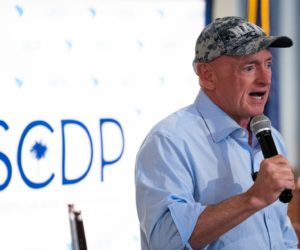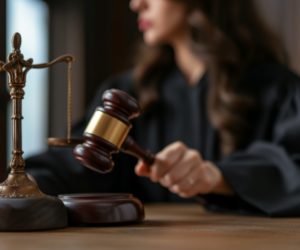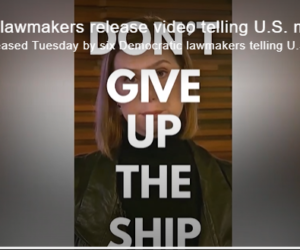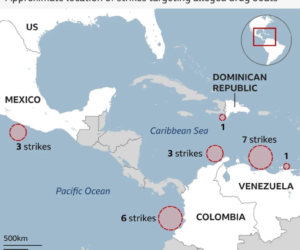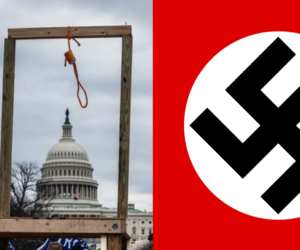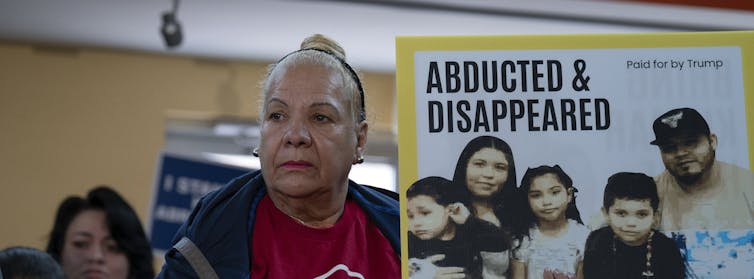
AP Photo/Jose Luis Magana
The Supreme Court on April 10, 2025, unanimously upheld the lower court order directing the Trump administration to “facilitate” the return of Kilmar Abrego García, a Maryland man who was wrongly deported to a maximum security prison in El Salvador.
The Supreme Court also directed the lower court to clarify aspects of the order.
“The order properly requires the Government to ‘facilitate’ Abrego García’s release from custody in El Salvador and to ensure that his case is handled as it would have been had he not been improperly sent to El Salvador,” the Supreme Court order states.
It is undisputed that the Trump administration made a mistake.
The Justice Department admitted to deporting Abrego García to a maximum security prison in El Salvador even though an immigration judge in 2019 ordered that he not be deported. The judge did so under an immigration law called “withholding of removal,” which is a protection, like asylum, for people facing persecution in their home country.
But the Trump administration has said a court cannot order it to fix its mistake and bring Abrego García back to the United States.
According to the Trump administration, such an order would be “constitutionally intolerable.” The government has compared the court order to return Abrego García to an order to “‘effectuate’ the end of the war in Ukraine or return hostages from Gaza.”
Abrego García should not have been deported
Abrego García received this protective legal status six years ago. That’s when he proved to the court he was highly likely to be persecuted by the government or gangs in El Salvador due to a specific reason, as required under immigration law.
Unlike asylum or refugee status, the status known as “withholding of removal” is not a pathway to citizenship. It allows a person to live and work in the U.S. indefinitely and not be deported to their country of nationality if they face persecution there.
The government states it arrested and deported Abrego García on March 15 because he is a gang member. When Abrego García appealed his deportation, the federal district and appellate courts determined that the government provided no credible evidence of gang membership.
That’s important, because the government failed to follow proper procedure to deport Abrego García based on gang membership. When someone is in “withholding of removal” status, the law requires the government to reopen immigration proceedings based on new evidence and seek to formally terminate the legal withholding status.
Abrego García should have been notified of the government’s desire to deport him, and he should have had the opportunity to make his case at a court hearing. His summary deportation to El Salvador likely violated his right to due process under immigration law and the Constitution.
Balance of powers are at stake
The government did not follow the law, but it argues that the court cannot do anything about it.
The crux of the government’s position is that a court does not have the power to order the release of a person in a foreign prison. That would interfere with the separation of powers among the executive and judicial branches. The president has the sole power to conduct foreign relations with El Salvador, and the government has argued that ordering the return of Abrego García interferes with that power.
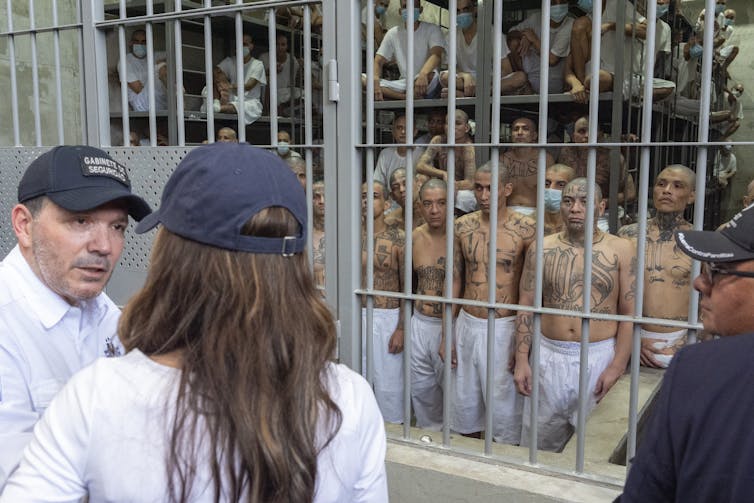
Alex Brandon/Pool/AFP via Getty Images
The court cannot order the Salvadoran government to do anything, but it can order the U.S. government to take steps to return García Abrego if he was unlawfully arrested and deported. That’s because the judiciary has the power to determine whether the president’s actions are lawful.
The district court’s order was based on its determination that the president has likely violated immigration law and the Constitution in arresting and deporting Abrego García. The appellate court agreed.
The Supreme Court has now said the order to facilitate Abrego García’s return is proper. But the high court also said the district court judge should further clarify its order, being mindful of the president’s authority when it comes to conducting foreign relations.
Who is detaining Abrego García?
The Salvadoran government seems to be imprisoning Abrego García at the request of the U.S. government.
Trump administration lawyers have suggested in their briefing to the Supreme Court that there could be reasons under El Salvador law for Abrego García’s imprisonment. The government has not identified any reasons and has not provided any evidence that Abrego García is charged with a crime in El Salvador, or that he is being held under Salvadoran law.
The Department of Homeland Security routinely contracts with local jails and for-profit prison corporations to temporarily house immigrant detainees in the U.S. The government has reportedly agreed to pay El Salvador US$6 million to imprison certain U.S. immigrant detainees for one year. The details of this agreement are not known.
Kristi Noem, the Homeland Security secretary, has said that the Salvadoran megaprison is “one of the tools in our tool kit that we will use.”
The district and appellate courts determined in this case that the U.S. is using the Salvadoran prison like any other detention facility. Under those circumstances, the U.S. government, not El Salvador, has ultimate control over Abrego García.
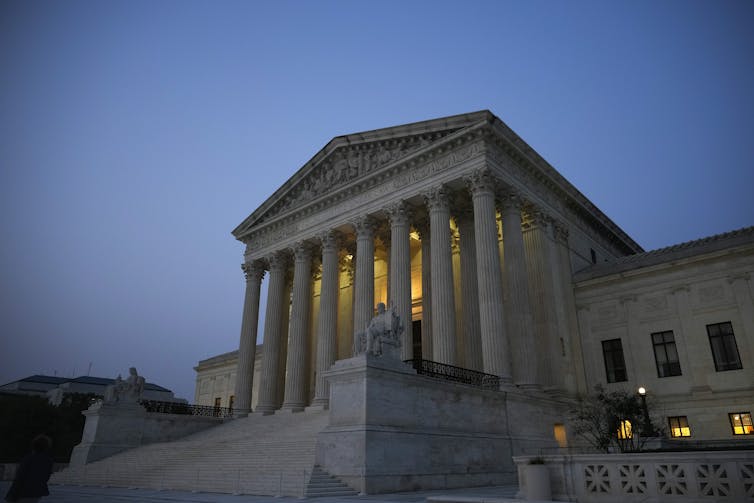
Drew Angerer/Getty Images
As an immigration law scholar, I believe that the government can take steps to return Abrego García.
In fact, other appellate courts have ordered the government to return immigrants who had been removed from the U.S. but later won their appeals of their removal orders. Those people were not in foreign prisons.
U.S. Immigration and Customs Enforcement has created a formal policy for aiding the return of immigrants who were deported while their appeals were pending and then subsequently won their appeals.
The government has argued that those situations are different. Here, it claims the court cannot demand the return of Abrego García, who is imprisoned in another country. The problem with the government’s argument is that it is the Trump administration that put Abrego García in a foreign prison.
The Trump administration has also argued that Abrego García is not entitled to return to the U.S.. It has argued that even though it was a mistake to deport him to El Salvador under his withholding of removal status, Abrego García could have been removed to another country and has no right to return to the U.S..
This would be true if Abrego García voluntarily left the U.S. or was deported to a country other than El Salvador, but that is not what happened. The government removed Abrego García to El Salvador in violation of U.S. law.
The White House’s position in this matter is troubling because the president is supposed to enforce the law, not circumvent it.
As Justice Sonia Sotomayor wrote in a separate statement published with the order and joined by Justices Elena Kagan and Ketanji Brown Jackson: “The Government’s argument, moreover, implies that it could deport and incarcerate any person, including U.S. citizens, without legal consequence, so long as it does so before a court can intervene.”
What steps the government will take to return Abrego García is unclear. The Supreme Court’s decision leaves open the question of how far the court can go to enforce his return.![]()
Jean Lantz Reisz, Clinical Associate Professor of Law, Co-Director, USC Immigration Clinic, University of Southern California
This article is republished from The Conversation under a Creative Commons license. Read the original article.


